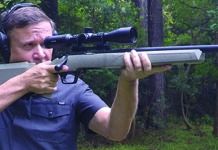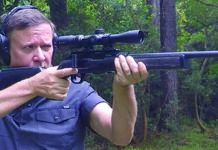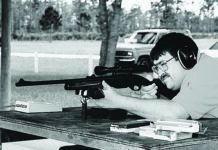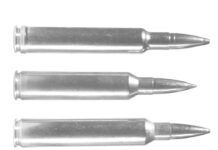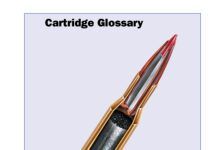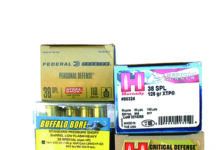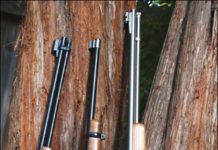Bushmaster Firearms Wins Alabama DPS Carbine Contract
22 Magnums: Marlins 983S Bolt Gun Is a Magnum Bargain
The high demand and short supply of ammunition in recent months has left many rifle shooters scrambling for alternatives to their centerfire firearms. While rimfire rounds may not be the complete answer to the problem—some types of rimfire ammunition in also in short supply—the popularity of the less expensive bullets is growing.
Those shooters interested in a little more punch for the dollar are turning to 22 Magnum offerings. With more knock-down capability than a Long Rifle round and selling for at about half the cost of common centerfire ammunition, the magnums seem to be a good choice.
We selected the 22 Magnums because they can satisfy the plinking desires of firearm enthusiasts without breaking the bank; and they offer varmint-stopping punch for shooters interested in bagging small game. We selected three different actions of 22 Magnum rifles for our test, including one model that was recently discontinued and has become something of a sought-after collector's item. Each of the rifles has a dedicated fan base, with some favoring the old-style lever action; some siding with the normally more accurate bolt action; and some interested in the rapid-fire power of a semiautomatic.
The three rifles in our test were the lever-action Henry Model H001M, $420; the bolt-action Marlin Model 983S, $320; and the discontinued (2006) semiauto Ruger Model 10-22, which is selling for about $600 on several gun-trading websites. Despite the continuing drain on ammunition supplies because of volume purchases, there are still many different varieties of affordable 22 Magnum ammo available at most sporting-goods outlets.
We selected three types of ammunition for our test of the three rifles to check out the effectiveness and grouping of different loads. Our test ammunition included CCI Maxi Mag TNT 30-grain hollowpoints with an average muzzle velocity of 2,200 fps; Remington Premier Magnum Rimfire 33-grain Accutip-V rounds with an average muzzle velocity of 2,000 fps, and Winchester Supreme High Velocity 30-grain jacketed hollowpoints with an average muzzle velocity of 2,250 fps.
Our testing consisted of firing groups of five shots with each rifle at targets set up 50 yards down range, utilizing a Nikon ProStaff 4X scope. All shots were fired from a solid rest on an Uncle Bud's Bull Bag at Birchwood Casey Shoot-N-C 12-inch targets. We also fired a few test rounds with the open sights of each rifle, with the details listed below. Here's our test report:
Marlin 980S 22 LR
An Early 1873 Winchester
BATFE Rules on Manufacturing of Firearms Points
Fulton Armory M1 Carbine .30 Carbine
Buffalo Bore 158-Grain Roundnose Bullet
Heckler & Koch SL8-1 .223 Rem.
Heckler & Koch is marketing a variant of its G36 assault rifle as a heavy-barrel accuracy rifle for the U.S. market. What struck us as unusual was the marrying of a heavy barrel or other heavy componentry to what was originally a lightweight field rifle configuration. The SL8-1 is a grey polymer-stocked unit that sells for $1,249.
Ruger Introduces SR-556 Autoloading Rifle
Head-to-Head Shootout: Bolt Rifles from Savage and Marlin
It has been said that if you can't do it with a 30-06, you probably can't do it. That little saying is likely more right than wrong. It has been over a century since the U.S. Military recalled the (.30-03) M1903 Springfield rifle and modified it to accept the 30-06 in the form of the M1906. The most popular hunting cartridge in North America has spawned numerous variations, being necked up in the form of the .35 Whelen and necked down as in the 25-06, with the 270 Winchester perhaps the most successful of its many offspring.
Newly introduced for 2009 are two bolt guns chambered for the 30-06, one being the latest incarnation of the highly refined Savage long action and the other the latest walnut model of the recently introduced Marlin XL7 rifle. If imitation is the greatest form of flattery, the Marlin profusely flatters the older Savage 110 action, but there are salient differences between the two, as we were soon to discover.






